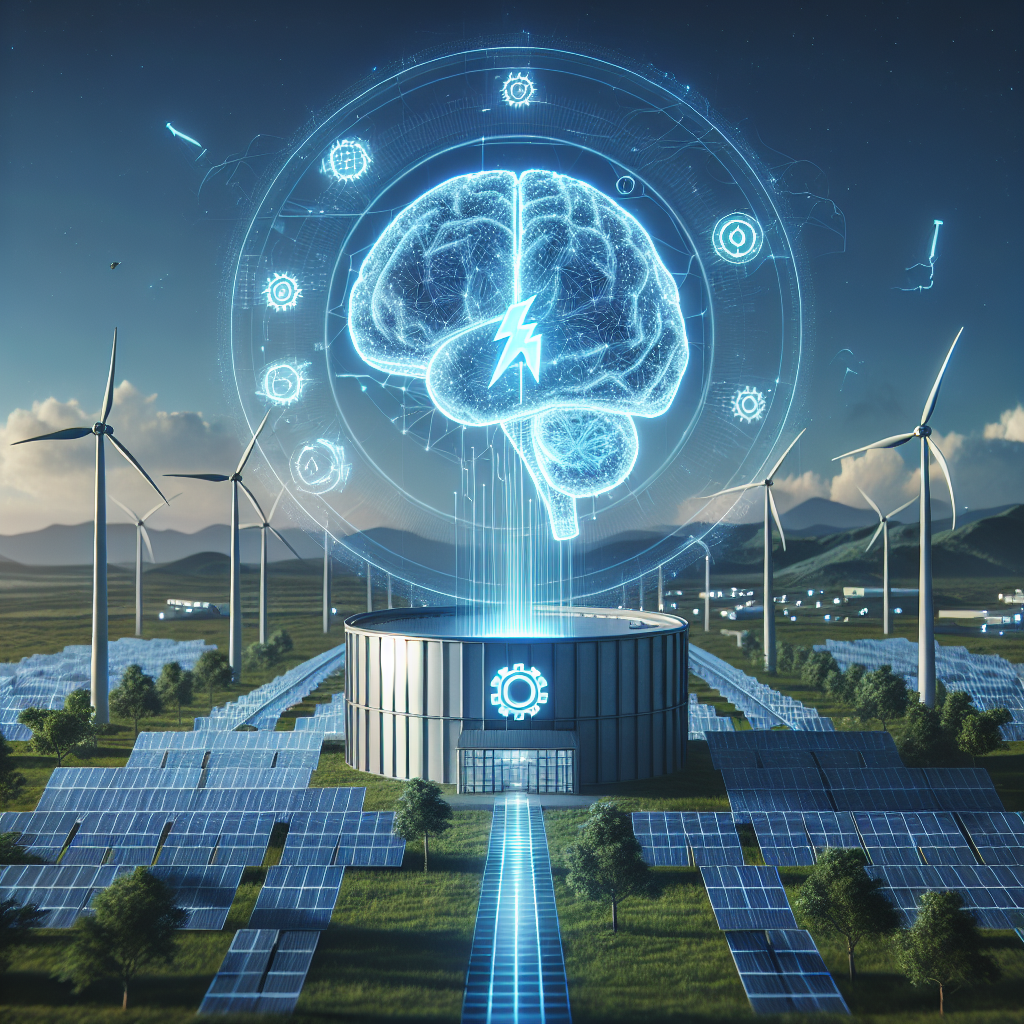As the world faces the urgent challenge of transitioning to cleaner and more sustainable sources of energy, artificial intelligence (AI) is playing an increasingly important role in driving innovations in the renewable energy sector. AI-driven technologies are being used to optimize renewable energy production, improve energy storage systems, and enhance grid management, among other applications. In this article, we will explore some of the key ways in which AI is revolutionizing the renewable energy industry and driving the transition to a more sustainable energy future.
One of the most significant ways in which AI is being used in the renewable energy sector is in the optimization of renewable energy production. AI algorithms can analyze vast amounts of data from renewable energy sources such as solar panels and wind turbines to predict energy output, identify potential issues, and optimize energy production. By using AI to optimize energy production, renewable energy operators can maximize their output, reduce downtime, and improve overall efficiency.
For example, AI algorithms can analyze weather patterns and historical data to predict when and where to deploy renewable energy resources most effectively. By using AI to optimize energy production, renewable energy operators can increase their revenue and reduce their carbon footprint.
AI is also being used to improve energy storage systems, which are essential for storing excess energy generated by renewable sources such as solar and wind power. AI algorithms can optimize energy storage systems by predicting energy demand, managing energy flows, and maximizing the efficiency of storage systems. By using AI to optimize energy storage, renewable energy operators can ensure a reliable and resilient energy supply, even when renewable sources are not producing energy.
In addition to optimizing energy production and storage, AI is also being used to enhance grid management. AI algorithms can analyze real-time data from the grid to predict energy demand, identify potential grid failures, and optimize energy distribution. By using AI to manage the grid, renewable energy operators can improve grid reliability, reduce energy costs, and increase the integration of renewable energy sources into the grid.
Overall, AI-driven innovations in renewable energy are revolutionizing the way we generate, store, and distribute energy. By using AI to optimize energy production, storage, and grid management, renewable energy operators can increase efficiency, reduce costs, and accelerate the transition to a more sustainable energy future.
FAQs:
Q: How is AI being used to optimize renewable energy production?
A: AI algorithms can analyze data from renewable energy sources such as solar panels and wind turbines to predict energy output, identify potential issues, and optimize energy production.
Q: How is AI being used to improve energy storage systems?
A: AI algorithms can optimize energy storage systems by predicting energy demand, managing energy flows, and maximizing the efficiency of storage systems.
Q: How is AI being used to enhance grid management?
A: AI algorithms can analyze real-time data from the grid to predict energy demand, identify potential grid failures, and optimize energy distribution.
Q: What are the benefits of using AI in the renewable energy sector?
A: Using AI in the renewable energy sector can increase efficiency, reduce costs, and accelerate the transition to a more sustainable energy future.
In conclusion, AI-driven innovations in renewable energy are transforming the way we generate, store, and distribute energy. By optimizing energy production, improving energy storage systems, and enhancing grid management, AI is helping to drive the transition to a more sustainable energy future. As the world continues to grapple with the challenges of climate change and energy security, AI will play an increasingly important role in revolutionizing the renewable energy industry and creating a more sustainable energy future for generations to come.

